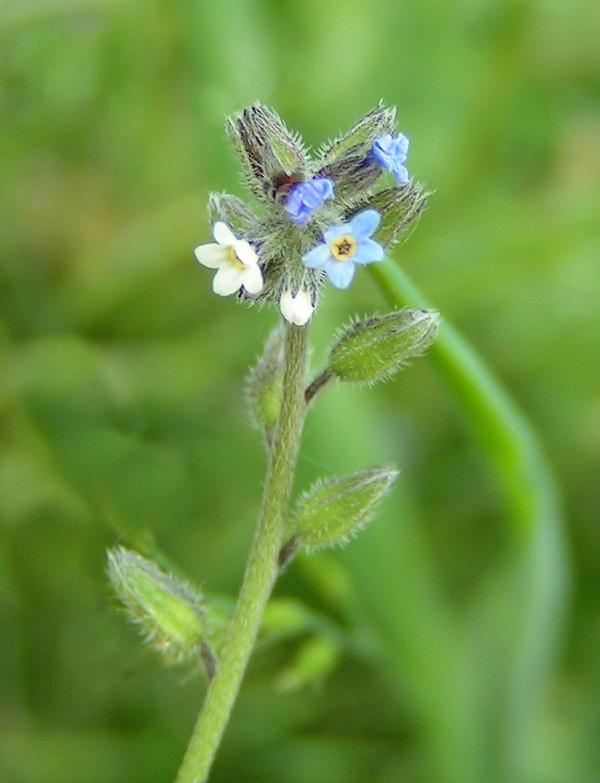- Boraginaceae
image_width = 200px
image_caption =Forget-me-not ("Myosotis discolor")
regnum =Plant ae
divisio = Magnoliophyta
classis =Magnoliopsida
familia = Boraginaceae
familia_authority = Juss.
subdivision_ranks = Genera
subdivision = "many, see text"Boraginaceae Juss. 1789, the
Borage orForget-me-not family, includes a variety ofshrub s,tree s, andherb s, totaling about 2,000 species in 100 genera found worldwide. A number of familiar plants belong to this family.The Boraginaceae belong, according to the APG II, among the euasterid I group including the orders
Gentianales ,Lamiales , andSolanales , but whether they should be assigned to one of these orders or to their own (Boraginales ) is still uncertain. Under the olderCronquist system they were included in the Lamiales, but it is now clear that they are no more similar to the other families in this order than they are to families in several other asterid orders. The Boraginaceae areparaphyletic with respect toHydrophyllaceae and the latter is included in the former in APG II system. In some recent classifications the Boraginaceae are broken up into several families: Boraginaceae s.s.,Cordiaceae ,Ehretiaceae ,Heliotropiaceae , Hydrophyllaceae, andLennoaceae .Most though not all members of this family have hairy leaves. The coarse character of the hairs is due to
Silicon dioxide andCalcium carbonate . In some species,Anthocyanin s cause the flowers to change their color from red to blue when aging. This is likely used as a signal topollinators that these old flowers are depleted of pollen and nectar (Hess, 2005).Well-known members include:
*Alkanet "Anchusa tinctoria"
*Borage "Borago" spp.
*Comfrey "Symphytum"
*Fiddleneck "Amsinckia" spp.
*Forget-me-not "Myosotis" spp.
*Geiger Tree "Cordia"
*Green alkanet "Pentaglottis senpervirens"
* Heliotrope "Heliotropium"
*Hound's Tongue "Cynoglossum"
*Lungwort "Pulmonaria"
* Oyster Plant "Mertensia maritima"
*Patterson's Curse "Echium plantaginuem"
*Viper's Bugloss "Echium vulgare"Genera
References
*Diane, N., H. Förther, and H. H. Hilger. 2002. A systematic analysis of "Heliotropium", "Tournefortia", and allied taxa of the Heliotropiaceae (Boraginales) based on ITS1 sequences and morphological data. "American Journal of Botany" 89: 287-295 (online abstract [http://www.amjbot.org/cgi/content/abstract/89/2/287 here] ).
* Gottschling, M., H. H. Hilger 1, M. Wolf 2, N. Diane. 2001. Secondary Structure of the ITS1 Transcript and its Application in a Reconstruction of the Phylogeny of Boraginales. "Plant Biology (Stuttgart)" 3: 629-636.
* Hess, Dieter. 2005. Systematische Botanik. ISBN 3-8252-2673-5External links
* [http://www.topwalks.net/plants/generos/boraginaceae_01.htm Boraginaceae in Topwalks]
* [http://delta-intkey.com/angio/www/boragina.htm Boraginaceae] in [http://delta-intkey.com/angio/ L. Watson and M.J. Dallwitz (1992 onwards). The families of flowering plants: descriptions, illustrations, identification, information retrieval.] http://delta-intkey.com
* [http://www.itis.usda.gov/servlet/SingleRpt/SingleRpt?search_topic=TSN&search_value=31633 ITIS entry for Boraginaceae]
Wikimedia Foundation. 2010.

